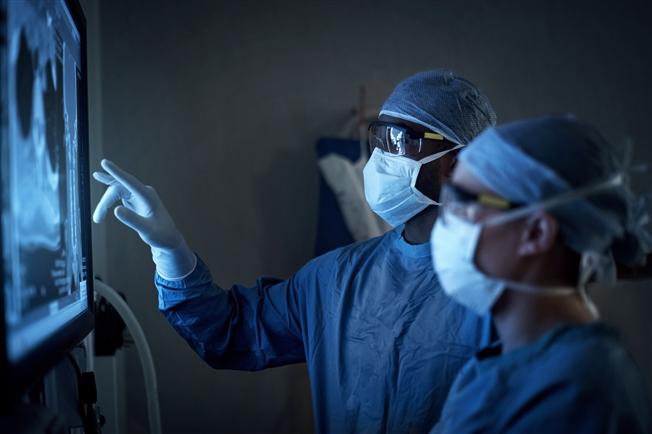New guidelines extend treatment window for stroke

A new study has the potential to make a big difference in the lives of millions of Americans.
In January 2018, a new study was published in the New England Journal of Medicine stating that some patients can receive a procedure called thrombectomy up to 24 hours after the onset of stroke symptoms and still reverse or minimize the effects of stroke. In the past, doctors had only four and a half hours to administer clot-busting drugs or six hours to perform thrombectomy.
This is a significant shift, and can improve the survival rates and quality of life for patients with stroke, says Michelle J. Smith, MD, chief of neurosurgery at Main Line Health, a member of the Jefferson Neuroscience Network.
“This upends everything we previously thought we knew about treating stroke. Many more patients are eligible to receive life-saving interventions,” explains Dr. Smith.
What is a thrombectomy?
Traditionally, there are two treatment options for acute ischemic strokes. The first is an intravenous drug called tissue plasminogen activator, or tPA. Delivered through an IV in the arm, tPA works to dissolve blood clot and improve blood flow.
Unfortunately, the drug’s effectiveness also relies on size of the blood clot and the immediate recognition of a stroke.
“IV tPA is considered a first line of defense against stroke but, in order for it to be effective, the clot cannot be too large and it has to be administered within three to four and a half hours,” explains Dr. Smith. “For patients with large vessel blockages or who are outside the 4.5 hour window, we can treat with thrombectomy to potentially reverse their stroke.”
Thrombectomy is a minimally invasive endovascular procedure during which physicians thread a catheter through a blood vessel in the groin up to a blocked blood vessel in the patient’s brain to clear it.
How can thrombectomy help you?
While thrombectomy has the potential to improve the lives of a number of patients, one group—in particular—will likely benefit from the new guidelines. Approximately 20 percent of acute ischemic strokes occur during sleep—a phenomenon known as a “wake-up stroke.” In instances like these, patients wake up from an evening of sleep with symptoms of a stroke.
“It is difficult to determine what time a patient’s symptoms began if they arrive with a wake-up stroke. Without this knowledge, it was not previously indicated to provide IV tPA or thrombectomy,” says Dr. Smith. “With data from new studies, we now know we can successfully treat select wake-up stroke patients up to 24 hours from the beginning of their symptoms.”
While the promise of an expanded treatment window is encouraging, Dr. Smith reminds people who think that they or someone else might be having a stroke to call 911 to seek care immediately.
“Despite the new studies, it’s still important to seek medical attention if you notice the symptoms of a stroke. The faster stroke treatment can be given, the better chance a patient has for recovery. Remember: time is brain,” says Dr. Smith.
There’s an easy trick to help you remember the symptoms of stroke: F.A.S.T. “F.A.S.T. stands for face drooping, arm weakness, speech difficulty and time to call 911,” explains Dr. Smith. “It’s a very simple way to remember the symptoms of a stroke and the importance of acting quickly.”
If you’re experiencing one or more of these symptoms, call 911 for immediate medical attention.
Thrombectomy at Main Line Health
Thrombectomy is beginning to transform stroke care, but the treatment isn’t an option at all in many regions. Bryn Mawr Hospital is proud to offer mechanical thrombectomy, 24/7, as a stroke treatment option for our community. Learn more about stroke treatment at Main Line Health.
All four Main Line Health hospitals are certified primary stroke centers and have received Gold-level performance in the Get with the Guidelines®- Stroke program from the American Heart Association. Main Line Health serves patients at hospitals and health centers throughout the western suburbs of Philadelphia.